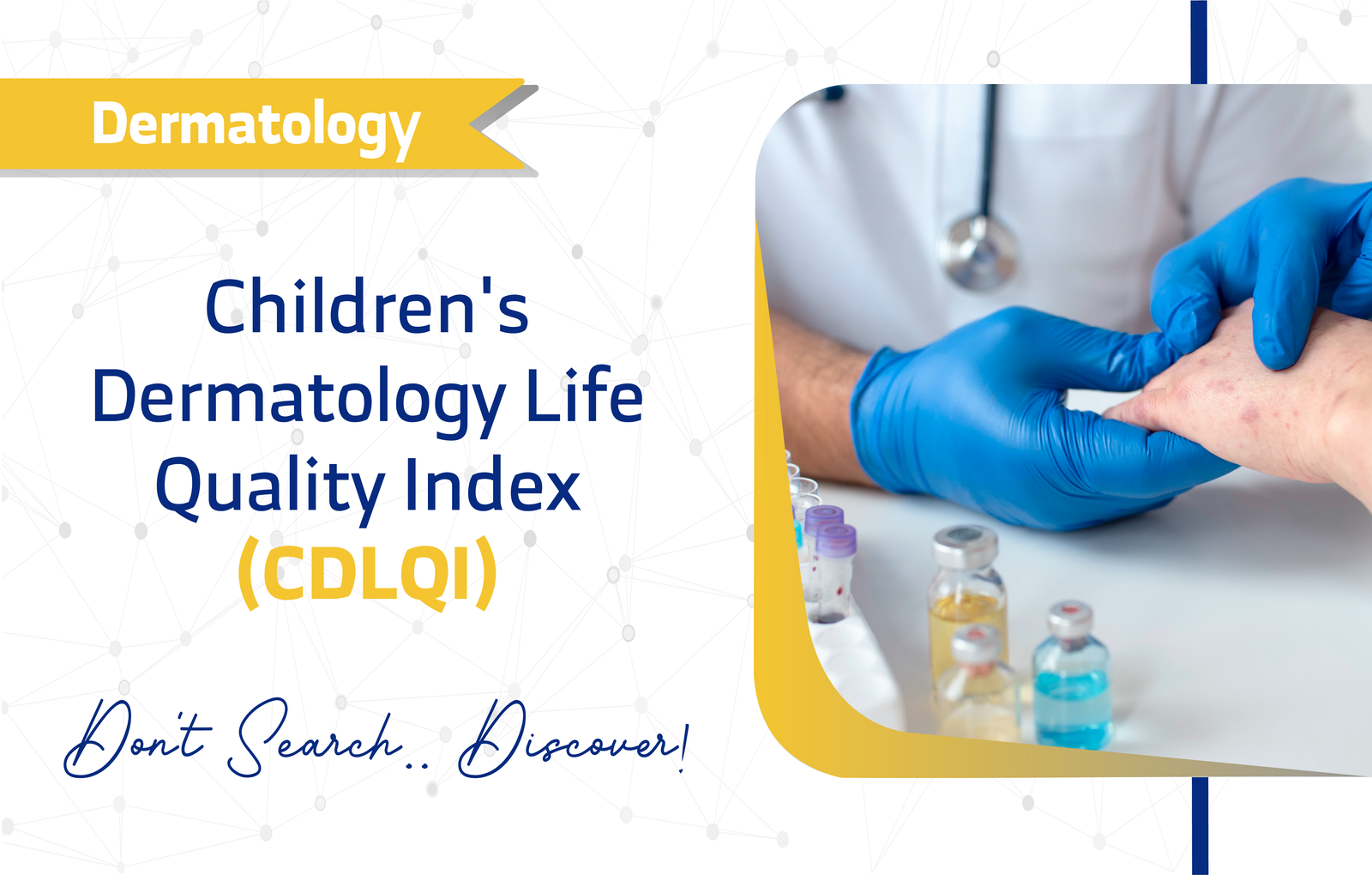Introduction
In pediatric dermatology, understanding the impact of skin conditions like eczema, psoriasis, and other dermatological disorders on a child’s life is crucial for developing effective treatment strategies. The Children’s Dermatology Life Quality Index (CDLQI) is a validated, reliable tool designed to assess how dermatological conditions affect the quality of life in children aged 4–16 years. This article provides an in-depth look at the CDLQI, highlighting its features, clinical applications, and relevance in research.
Key Features of the Children's Dermatology Life Quality Index
Purpose and Use
The CDLQI assesses the impact of dermatological conditions on children’s daily lives. It is primarily used in clinical settings and research to understand how skin conditions, such as eczema or psoriasis, influence various aspects of life, including emotional well-being, school performance, and social activities.
Target Population
Developers designed the questionnaire for children aged 4–16 years, a critical age group for social and emotional development. While, it can be used with both children and adolescents, making it versatile for a wide range of pediatric patients.
Domains and Sub-domains
The CDLQI covers multiple domains, including:
- Symptoms: Physical impact of skin conditions.
- Emotions: Emotional distress related to the skin condition.
- School: The effect on academic performance and school attendance.
Leisure and Social - Activities: How the condition affects social interaction and play.
Personal - Relationships: Impact on relationships with family and peers.
- Treatment: The impact of ongoing treatment and its side effects.
Scoring Method
The CDLQI uses a 4-point Likert scale to assess the severity of each item:
- 0 = Not relevant
- 1 = A little
- 2 = Quite a bit
- 3 = Very much
The total score can range from 0 to 30, with higher scores indicating a worse quality of life. This allows clinicians to monitor changes over time and assess the effectiveness of treatments.
Administration Format
The CDLQI offers flexible administration options, making it easy to integrate into various workflows:
- Paper-based: Ideal for clinics and low-tech settings
- Digital (Online): Accessible through websites and electronic health records
- Interview (In-person): Clinicians can include it during face-to-face consultations
Applications of Children’s Dermatology Life Quality Index
- Screening and Diagnosis: The CDLQI is widely used for screening children who may suffer from quality-of-life issues due to dermatological conditions. It helps identify the psychosocial impact of these conditions, enabling healthcare providers to address both physical and emotional aspects of care.
- Monitoring and Treatment Planning: By administering the CDLQI regularly, clinicians can monitor a child’s progress and adjust treatment plans accordingly. A decrease in the CDLQI score typically indicates an improvement in the child’s condition and overall quality of life.
- Research: The CDLQI plays a significant role in research by providing standardized data on the impact of dermatological diseases. Researchers can frequently use it in clinical trials to assess the effectiveness of new treatments and interventions.
Languages Available
The CDLQI has been translated into over 40 languages, ensuring its global applicability. Experts have culturally adapted the CDLQI to reflect how different populations perceive
dermatological conditions.
Reliability and Validity
Studies have demonstrated that the CDLQI shows excellent statistical reliability, with a Cronbach’s alpha ranging from 0.82 to 0.94, indicating high internal consistency. The sensitivity of the questionnaire is between 85-90%, and its specificity is between 80-85%, making it a reliable tool for assessing dermatological quality of life.
Limitations and Considerations
While the CDLQI is highly useful, it does have some limitations:
- Cultural Bias: Some items may not be relevant across all cultures.
- Self-report Bias: The questionnaire relies on the child or parent’s perception of the impact, which may lead to biases.
- Limited Scope: It is focused solely on dermatology-related quality of life and does not assess broader psychological or social factors.
Additional Resources of Children’s Dermatology Life Quality Index
- You can access the original validation study.
- Access the questionnaire as a PDF
For inquiries, contact University of Nottingham – Dermatology Department:
- Email: dermatology@nottingham.ac.uk
- Official website of the university click here
Frequently Asked Questions (FAQ)
- How long does it take to complete the CDLQI?
The CDLQI takes typically 5-10 minutes to complete. - Who can administer the CDLQI?
Healthcare professionals with a basic understanding of its scoring and interpretation can administer the CDLQI. Parents or guardians can also complete it independently, though clinicians should guide the process to ensure accurate assessment.
- Can the CDLQI be used in different languages?
Absolutely. It’s available in more than 40 languages. - Is there a version of the CDLQI for younger children?
Yes, the IDQoL (Infant Dermatitis Quality of Life Index) is designed for infants aged 0-4 years, specifically targeting eczema. - What is the difference between CDLQI and DLQI?
CDLQI is designed for children aged 4–16, while DLQI is used for adults.
A word from ResRef
The Children’s Dermatology Life Quality Index (CDLQI) is an essential tool for evaluating pediatric dermatology patients’ quality of life. It offers quick and reliable insights into the daily challenges faced by children with skin conditions, enabling clinicians to tailor treatments and interventions that address both physical and emotional needs.
References
- Lewis-Jones MS, Finlay AY. The Children’s Dermatology Life Quality Index (CDLQI): initial validation and practical use. Br J Dermatol. 1995 Jun;132(6):942-9. doi: 10.1111/j.1365-2133.1995.tb16953.x. PMID: 7662573. Link








